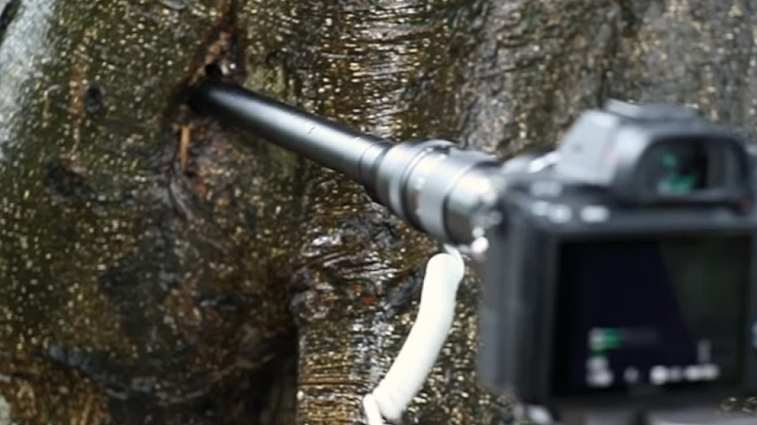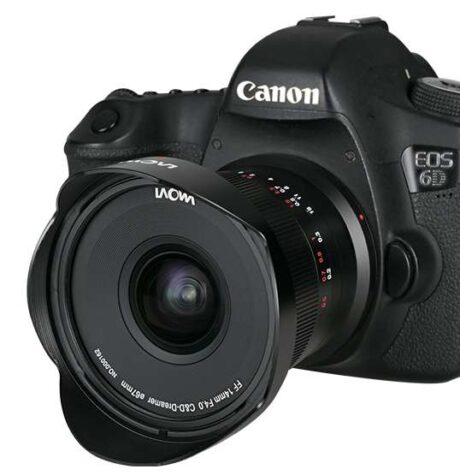How good are the Laowa lenses from Hong Kong-based newcomer, Venus Optics?

Venus Optics, which is based in Hong Kong, and markets under the ‘Laowa’ brand name, was only established in 2013 so it’s still a relative newcomer against the long-established photography brands. While other newcomers to imaging technology like Sony and Panasonic have been familiar names for well over half a century, few people had heard about – or seen – Laowa-branded products until the last few years. And even now, the brand is still not well-known, which is a pity.
On the surface, the company has good credentials; it was launched by a team of Chinese optical designers who had previously worked for leading Japanese and German manufacturers and claim more than 20 years’ experience in lens design. Based in Hefei, the capital and largest city of Anhui Province, People’s Republic of China, since opening it has specialised in creating ‘Premium’ lenses that are ‘truly unique, practical and affordable’ (to quote from the company’s website). It also markets a range of lens accessories, including mount adapters, format and shift converters, filter holders and a macro flash and ring light, although the main focus is upon the lenses.
First product was the Laowa 60mm f/2.8 2X Ultra-Macro Lens, which Venus Optics claimed as a ‘world’s first’ 2:1 macro lens with a focusing range from 2:1 magnification ratio to infinity focus. Then came another ‘world first’: the Laowa 15mm f/4 Wide Angle Macro Lens – ‘the world’s widest 1:1 Macro lens’.
Perhaps the most eye-catching of Laowa lenses is ‘The Probe’ (pictured above), a 24mm f/14 2X macro lens with an extension tube. The front barrel of the lens is waterproof and an LED ring light is mounted at the tip as a light source.

Laowa lenses are certainly interesting – and generally quite different from those released by the major camera manufacturers. But, contrary to many preconceptions associated with Chinese-made products, they’re not bargain-basement ‘cheap’ but could rather be described as good value. A check of the company’s Australian website (https://laowa.com.au/) reveals most lenses are priced between $700 and $1000. The lowest listed price is $399 for a fisheye lens for M4/3 cameras and the highest is $7999 for a 25-100mm T2.9 cine lens (a relatively recent addition).
Until quite recently the company has concentrated on ultra-wide-angle and macro lenses for stills cameras. However, this year it added shift and cinematic lenses, all of which are marketed under the Laowa brand. Compact designs with minimal distortion (‘Zero-D’) and ultra-fast prime lenses under the ‘Argus’ label are a recent focus.
The current range is split into four segments: Argus, Landscape, Macro and Cinema and consists of 23 camera lenses, five cinema lenses and two adapters. Four ‘Argus’ f/0.95 lenses with various focal lengths in M4/3, APS-C and full-frame mounts have been scheduled for release this year but have not yet been listed on the local website. The site also provides a list of dealers offering Laowa lenses on a state-by-state basis. (Many of the majors are listed along with their locations, phone numbers and business hours.)
Key features to take into account when considering Laowa lenses:
1. It’s important to understand most Laowa lenses have fully manual controls, with no electronic contacts in the lens mounts to communicate information with the camera they’re fitted to. This means lens data won’t be recorded in image files.
2. Manual focusing is pretty much universal. Consequently, the lenses are best used with cameras that provide focusing aids such as magnification and peaking displays. Such aids are essential for the macro lenses and shorter wide angle lenses; less so for the ultra-wide lenses, which can be used with ‘guesstimated’ focus at f/5.6 or smaller apertures.
3. Some models include an option to choose auto-aperture control or aperture coupling for some lens mounts, usually at a higher price that the fully-manual alternative. A few come with a CPU chip and motor that allows aperture control from the camera and embedding of EXIF metadata in image files. Rangefinder coupling is available in some of the Leica M-mount lenses for easier and more accurate manual focusing.
4. Most of the lenses we’ve seen are robustly-built and many have metal barrels that can withstand a fair amount of rough handling. But they’re seldom finished to the degree that lenses from established camera manufacturers and third-party lens specialists achieve.
5. Some lenses – especially the ultra-wide models – come in lightweight versions that enable them to be carried by drones. But it’s important to remember these are fully-manual models, which means apertures and exposure levels can’t be controlled remotely via the camera.
So far we’ve only tested two ultra-wide-angle lenses – the Laowa 14mm f/4 Zero-D DSLR lens (full frame) and the Laowa 7.5mm wide-angle lens with a M4/3 mount. Their centre-of-field performance has been very good – provided the lens is focused correctly and used within its design parameters. Edge-of-field performance was less stellar and both lenses suffered from relatively high levels of lateral chromatic aberration – which was not corrected by in-camera processing.
From a dealer’s viewpoint, Laowa is worth looking at if you want to offer customers a lens that is different, and generally more affordable, to those offered by the camera manufacturers. (We aren’t sure what kind of margins are being offered.) It’s also worth considering for dealers venturing into sales of cine cameras. However, the current catalogue is still quite small and although it is growing quite rapidly, not all lenses are available in all currently-sold lens mounts.





Be First to Comment